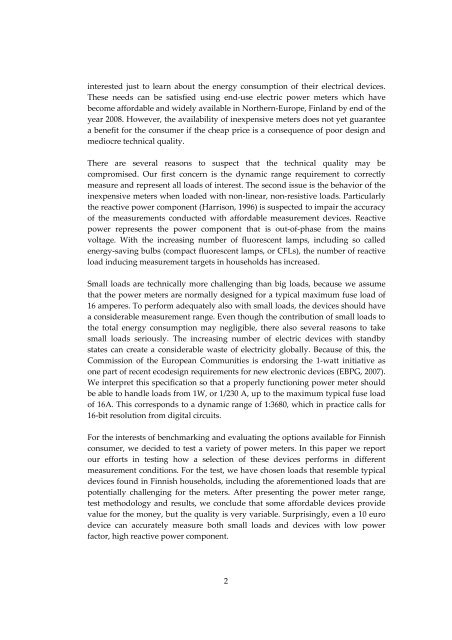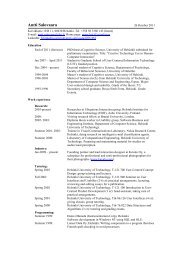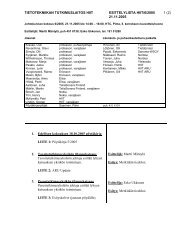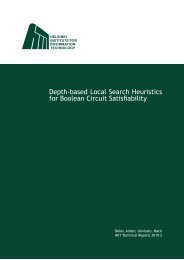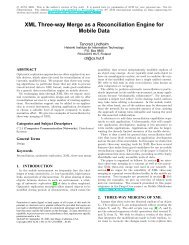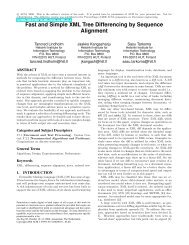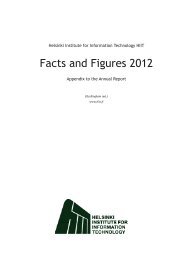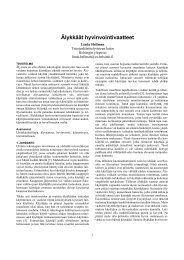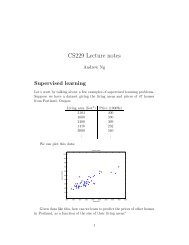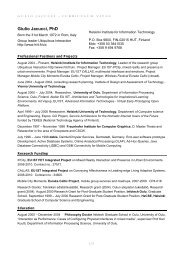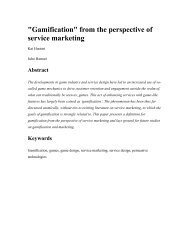Comparison of EndâUser Electric Power Meters for Accuracy
Comparison of EndâUser Electric Power Meters for Accuracy
Comparison of EndâUser Electric Power Meters for Accuracy
Create successful ePaper yourself
Turn your PDF publications into a flip-book with our unique Google optimized e-Paper software.
interested just to learn about the energy consumption <strong>of</strong> their electrical devices.<br />
These needs can be satisfied using end‐use electric power meters which have<br />
become af<strong>for</strong>dable and widely available in Northern‐Europe, Finland by end <strong>of</strong> the<br />
year 2008. However, the availability <strong>of</strong> inexpensive meters does not yet guarantee<br />
a benefit <strong>for</strong> the consumer if the cheap price is a consequence <strong>of</strong> poor design and<br />
mediocre technical quality.<br />
There are several reasons to suspect that the technical quality may be<br />
compromised. Our first concern is the dynamic range requirement to correctly<br />
measure and represent all loads <strong>of</strong> interest. The second issue is the behavior <strong>of</strong> the<br />
inexpensive meters when loaded with non‐linear, non‐resistive loads. Particularly<br />
the reactive power component (Harrison, 1996) is suspected to impair the accuracy<br />
<strong>of</strong> the measurements conducted with af<strong>for</strong>dable measurement devices. Reactive<br />
power represents the power component that is out‐<strong>of</strong>‐phase from the mains<br />
voltage. With the increasing number <strong>of</strong> fluorescent lamps, including so called<br />
energy‐saving bulbs (compact fluorescent lamps, or CFLs), the number <strong>of</strong> reactive<br />
load inducing measurement targets in households has increased.<br />
Small loads are technically more challenging than big loads, because we assume<br />
that the power meters are normally designed <strong>for</strong> a typical maximum fuse load <strong>of</strong><br />
16 amperes. To per<strong>for</strong>m adequately also with small loads, the devices should have<br />
a considerable measurement range. Even though the contribution <strong>of</strong> small loads to<br />
the total energy consumption may negligible, there also several reasons to take<br />
small loads seriously. The increasing number <strong>of</strong> electric devices with standby<br />
states can create a considerable waste <strong>of</strong> electricity globally. Because <strong>of</strong> this, the<br />
Commission <strong>of</strong> the European Communities is endorsing the 1‐watt initiative as<br />
one part <strong>of</strong> recent ecodesign requirements <strong>for</strong> new electronic devices (EBPG, 2007).<br />
We interpret this specification so that a properly functioning power meter should<br />
be able to handle loads from 1W, or 1/230 A, up to the maximum typical fuse load<br />
<strong>of</strong> 16A. This corresponds to a dynamic range <strong>of</strong> 1:3680, which in practice calls <strong>for</strong><br />
16‐bit resolution from digital circuits.<br />
For the interests <strong>of</strong> benchmarking and evaluating the options available <strong>for</strong> Finnish<br />
consumer, we decided to test a variety <strong>of</strong> power meters. In this paper we report<br />
our ef<strong>for</strong>ts in testing how a selection <strong>of</strong> these devices per<strong>for</strong>ms in different<br />
measurement conditions. For the test, we have chosen loads that resemble typical<br />
devices found in Finnish households, including the a<strong>for</strong>ementioned loads that are<br />
potentially challenging <strong>for</strong> the meters. After presenting the power meter range,<br />
test methodology and results, we conclude that some af<strong>for</strong>dable devices provide<br />
value <strong>for</strong> the money, but the quality is very variable. Surprisingly, even a 10 euro<br />
device can accurately measure both small loads and devices with low power<br />
factor, high reactive power component.<br />
2


